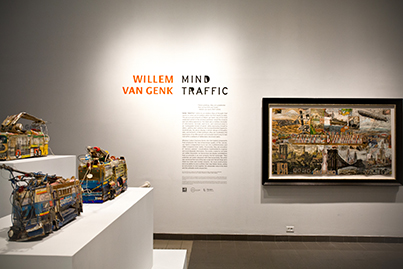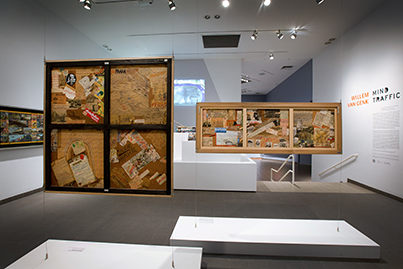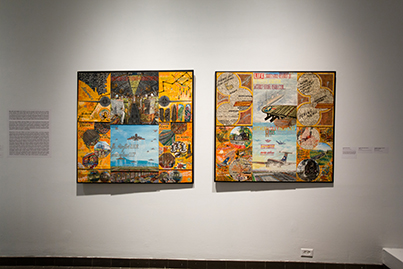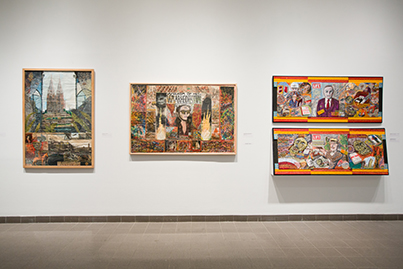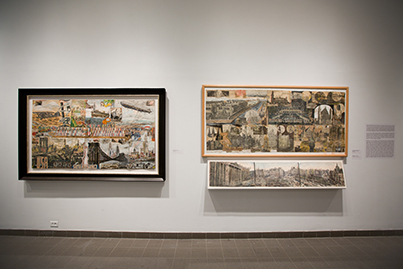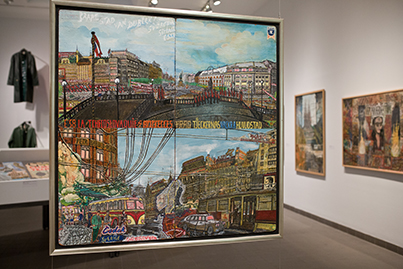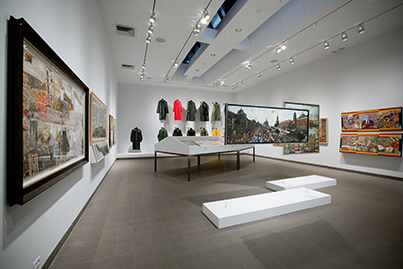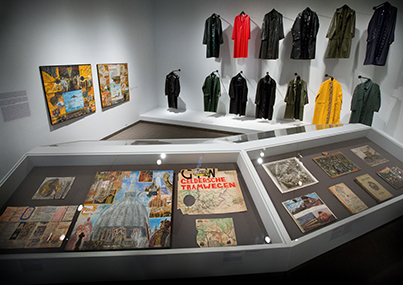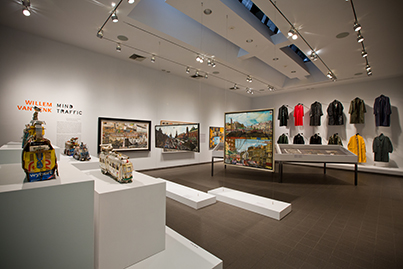UNTITLED (New York Proclamed . . . N. Petrov)
Willem van Genk (1927–2005)
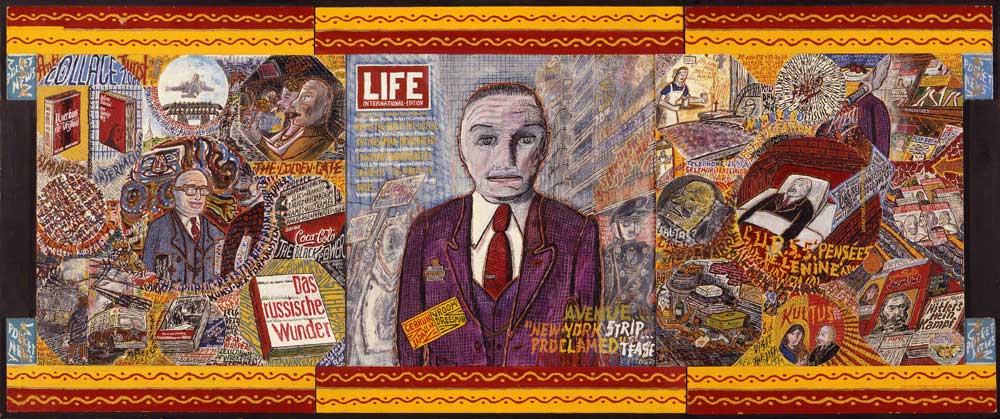

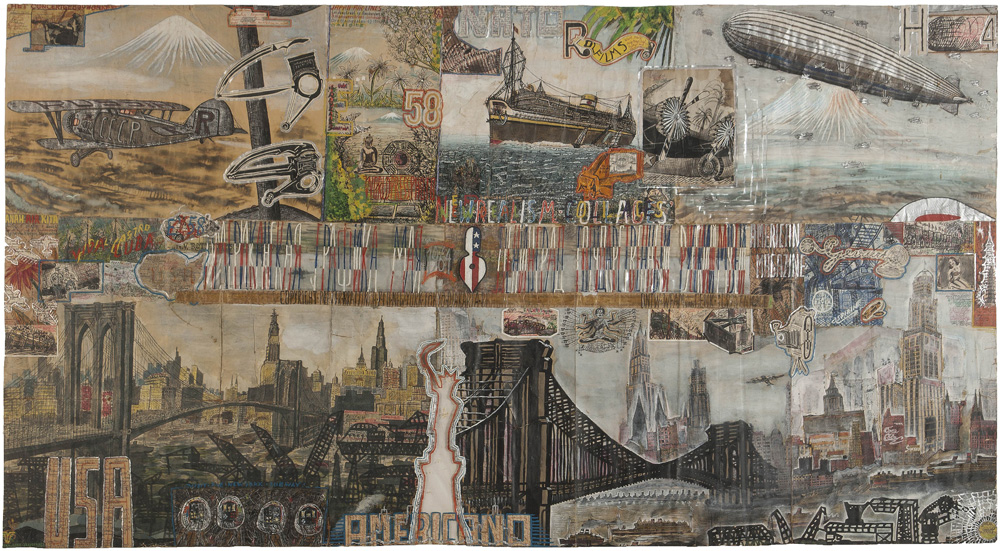
Willem van Genk: Mind Traffic is the first monographic exhibition of works by the internationally acclaimed Dutch artist Willem van Genk (1927–2005) to be presented in the United States. The exhibition includes over forty artworks: panoramic paintings, collages, drawings, personal notes, sculptures of trolleys, and an installation of raincoats (van Genk collected hundreds of raincoats over the course of his lifetime). This comprehensive selection provides an overview of the artist’s oeuvre and insight into his creative processes, methods, and themes. Van Genk’s artworks usually depict intricately layered and densely networked urban panoramas and reference interconnectivity. He was a restless stockpiler of information, factoids, and trivia: from this perspective, the artworks can be seen as “memory palaces”— visualizations implemented to organize and recall information. These imaginary landscapes serve as sophisticated devices and scaffolds to map hidden forces, since the artist believed that all things were connected via both visible and invisible networks.
The exhibition is co-organized by Dr. Valérie Rousseau, curator, art of the self-taught and art brut, American Folk Art Museum, and Patrick Allegaert and Yoon Hee Lamot, both curators at Museum Dr. Guislain, Ghent, Belgium. All of the works on view are drawn from the Willem van Genk Foundation, which retained the largest body of the artist’s work, the De Stadshof Collection, and the Museum Dr. Guislain, which manages both of these collections.
The exhibition is supported in part by Joyce Berger Cowin, the David Davies and Jack Weeden Fund for Exhibitions, public funds from the New York City Department of Cultural Affairs in partnership with the City Council, and the New York State Council on the Arts with the support of Governor Andrew Cuomo and the New York State Legislature. The exhibition and related lectures and symposia are supported in part by the Government of Flanders, Belgium, through Flanders House New York. Lectures and symposia are supported in part by the American Folk Art Museum Council for the Study of Art Brut and the Self-Taught.

- Roberta Smith

Untitled (New York Proclamed . . . N. Petrov)
Willem van Genk (1927–2005)
The Hague, Netherlands
c. 1973
Mixed media on assembled millboards
25 1/2 x 63 1/8″
Collection Foundation Willem van Genk, Museum Dr. Guislain, Ghent, 210302100
Photo by Guido Suykens, Ghent
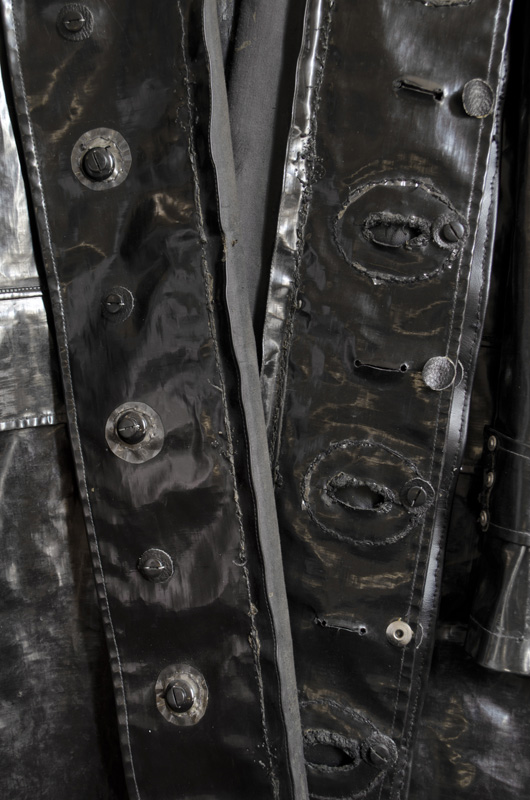
Display of Willem van Genk’s raincoats (detail)
Willem van Genk (1927–2005)
The Hague, Netherlands
n.d.
Leather and/or plastic
Approx. height 51–55″ each
Collection Museum Dr. Guislain, Ghent, 30040302
Photo by Guido Suykens, Ghent
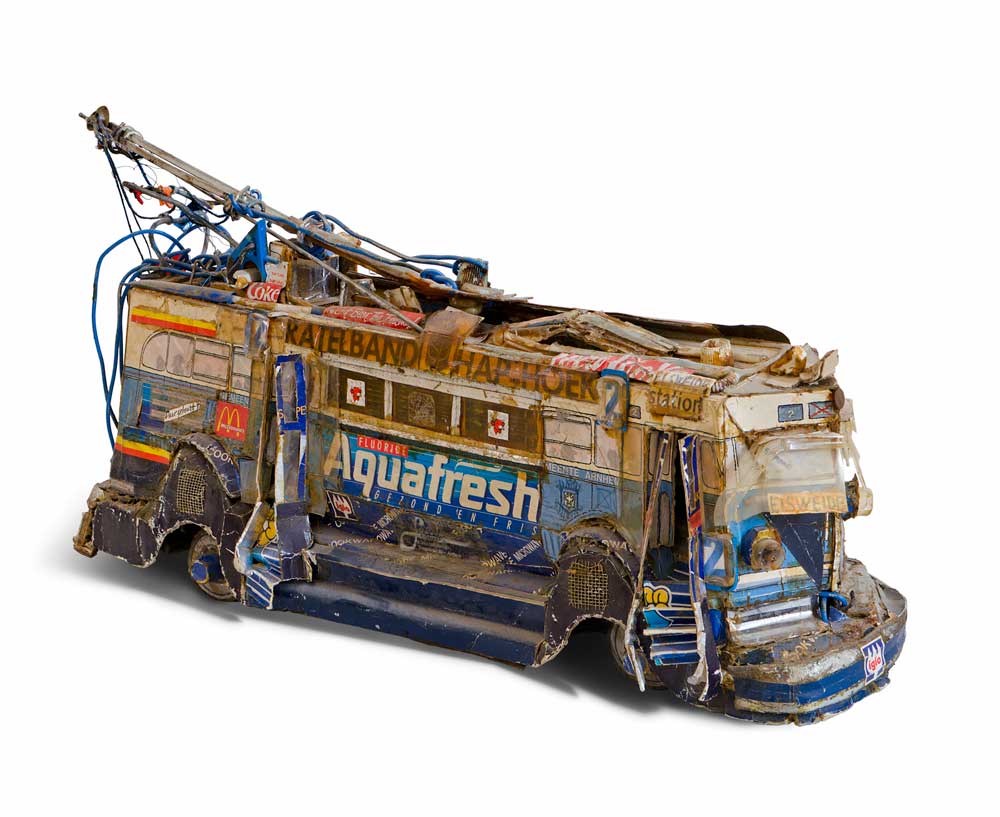
Untitled (Toblerone Trolley)
Willem van Genk (1927–2005)
The Hague, Netherlands
c. 1980–2000
Tin cans, cardboard, metal, paint, paper, and plastic
10 x 19 x 5 1/8″
Collection Foundation Willem van Genk, Museum Dr. Guislain, Ghent, 21030241
Photo by Guido Suykens, Ghent

Untitled (Brooklyn Bridge)
Willem van Genk (1927–2005)
The Hague, Netherlands
1960
Mixed media on paper
38 1/2 x 70″
Collection De Stadshof, Museum Dr. Guislain, Ghent, Belgium, OS1102125
Photo by Guido Suykens, Gent, Belgium

Untitled (Planta di Roma or Map of Rome)
Willem van Genk (1927–2005)
The Hague, Netherlands
n.d.
Ballpoint pen, ink, and pencil on paper
25 1/4 x 23 1/3″
Collection Museum Dr. Guislain, Ghent, 240210368
Photo by Guido Suykens, Ghent
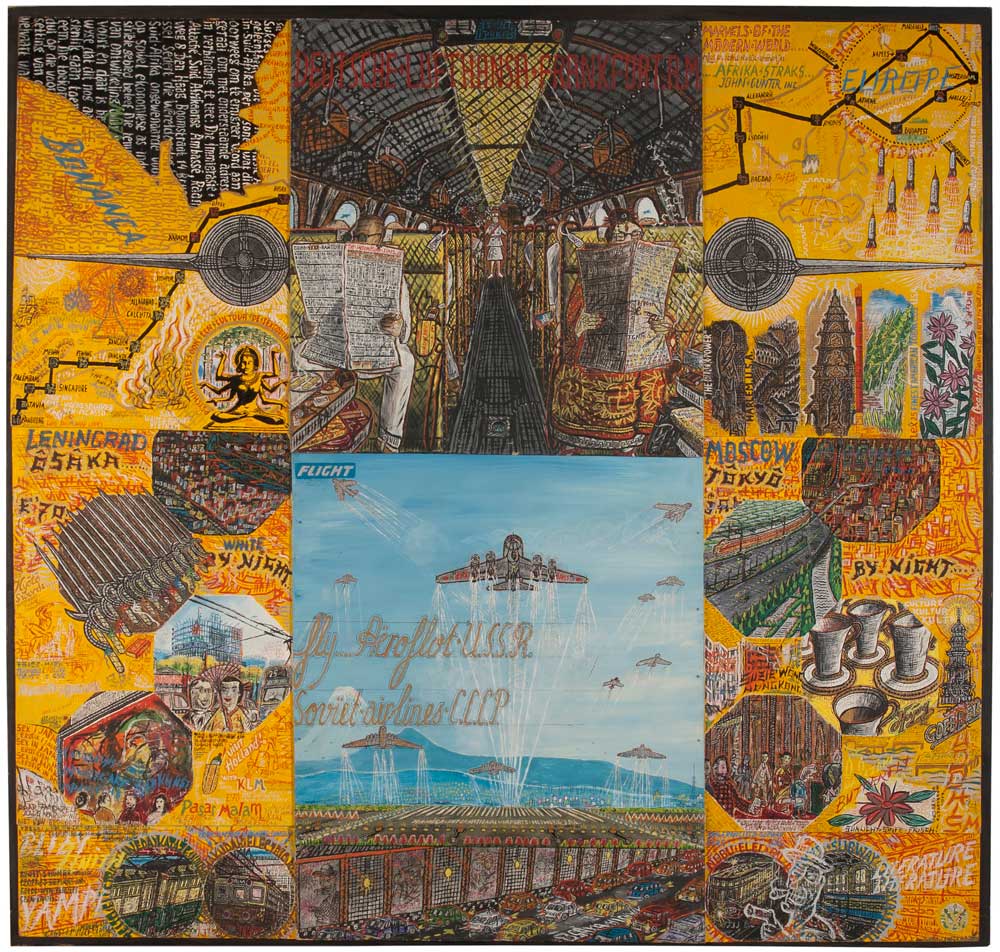
Untitled (World Airport)
Willem van Genk (1927–2005)
The Hague, Netherlands
1965
Mixed media on assembled millboards
44 3/4 x 46 3/4″
Collection Foundation Willem van Genk, Museum Dr. Guislain, Ghent, 210302106
Photo by Guido Suykens, Ghent
The exhibition is supported in part by Joyce Berger Cowin, the David Davies and Jack Weeden Fund for Exhibitions, public funds from the New York City Department of Cultural Affairs in partnership with the City Council, and the New York State Council on the Arts with the support of Governor Andrew Cuomo and the New York State Legislature. The exhibition and related lectures and symposia are supported in part by the Government of Flanders, Belgium, through Flanders House New York. Lectures and symposia are supported in part by the American Folk Art Museum Council for the Study of Art Brut and the Self-Taught.
